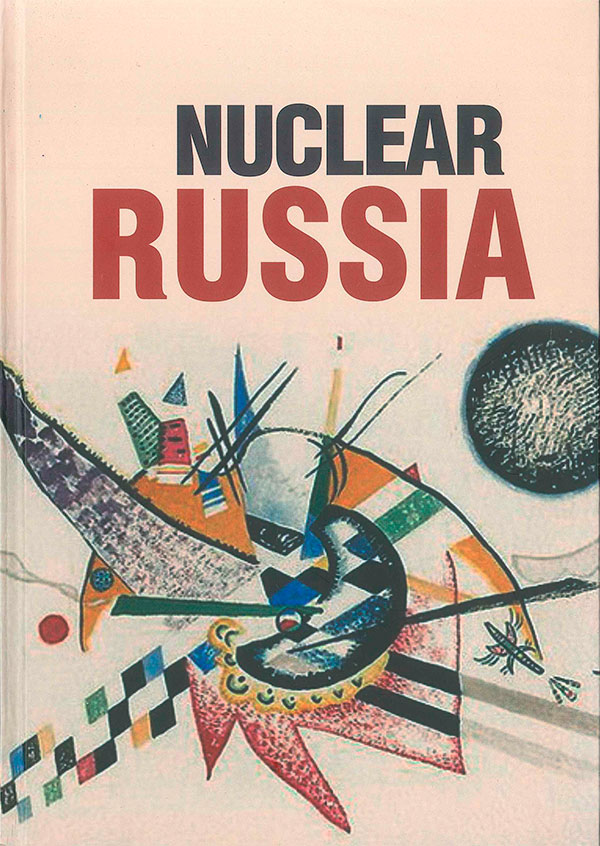The Strait of Ormuz: blockade and war or war and blockade
In
Login if you are already registered
(no votes) |
(0 votes) |
PhD in History, RAS Institute of Oriental Studies
The blockade of the Strait of Ormuz by Iran will undoubtedly become casus belli for the USA and the Arab oil-producing countries to formally declare war against Iran. In this situation the waterway may make its own case for launching war hostilities in the region. Another scenario implies the escalation of the “Ormuz crisis” amid military efforts to deal with Iran’s nuclear program. But whatever the scenario the problem of navigation in the Strait of Ormuz as well as the imposition by the EU an oil embargo is the derivative of the major problem of the world’s inability to keep Iran’s nuclear activity in check.
The blockade of the Strait of Ormuz by Iran will undoubtedly become casus belli for the USA and the Arab oil-producing countries to formally declare war against Iran. In this situation the waterway may make its own case for launching war hostilities in the region. Another scenario implies the escalation of the “Ormuz crisis” amid military efforts to deal with Iran’s nuclear program. But whatever the scenario the problem of navigation in the Strait of Ormuz as well as the imposition by the EU an oil embargo is the derivative of the major problem of the world’s inability to keep Iran’s nuclear activity in check.
The Ormuz balance of power
Iran is capable of blocking the Ormuz Strait for some time (according to experts’ estimates from one week to one month) by installing mine defense and the activities of its armed forces. The Navy Squad of the Guards of Islamic Revolution (Navy SGIR) armed with low tonnage swift missile boats (“mosquitoes”) which can not be located by the U.S. warships’ radars is able to deliver powerful blows on the enemy ships in Persian Gulf. Besides, Iranian Navy possesses many coastal missile batteries equipped with HY-2 Silkworm (range up to 120 km and warhead weight up to 175 kg) and YJ-2 (known as C-802 with the range up to 280 kg and warhead weight up to 225 kg) launchers. Also, it’s necessary to remember about Iran’s missile forces armed with Shahab missiles of all modifications [1] as well as Iranian Air Force.
Iran’s Navy and Air Force operating in Persian Gulf cannot be compared with the U.S.’s and their allies’ groupings.
That said both Iran’s Navy and Air Force operating in Persian Gulf cannot be compared with the U.S.’s and their allies’ groupings. Suffice it to say that Iran’s Navy personnel total number amounts to about 40 thousand [2]. Lately their main task has been to combat the Somalia pirates. Apart from the abovementioned armaments Iran’s Navy has on duty three Russian-made diesel submarines (the “Kilo” class), three frigates, two corvettes, 170 combat boats (missile, torpedo, artillery) and equal number of aircrafts and helicopters [2].
As of the end of January 2012 the United States was deploying in the region two aircraft carrier battle groupings headed by airborne ships “Abraham Lincoln” and “Carl Vinson”. They belong to the aircraft carrier sub-class “Nimitz” of the largest and mostly armed warships in the world. They accommodate over 5 thousand people including pilots and aircraft servicemen and 80 combat aircrafts. Besides, a typical aircraft carrier group apart from the aircraft carrier itself includes two cruisers, a frigate, three or four destroyers, two nuclear submarines and some support ships.
The aircraft carrier battle group also includes three ships of amphibious forces with the marine task group on board (2200 marines). The majority of the warships in the group are equipped with Aegis air-defense system. They may also carry Tomahawk cruise missiles whose range is 1000 km and homing precision up to 6 m.
In January 2012 the USA announced its plans to redeploy in March its third aircraft battle grouping closer to Iranian coast. It will include a nuclear aircraft carrier Enterprise, a missile cruiser and three missile destroyers.
Early in January Great Britain sent to Persian Gulf where it already deploys frigate Argall and the most powerful state-of-the art fleet destroyer” Daring”. UK Defense Secretary Philip Hammond said that the United Kingdom is ready to deploy in Persian Gulf new warships of the Royal Navy in case the tensions in the region continue to escalate.
US military bases in the region
Saudi Arabia hosts 9 thousand American troops, airbases Al-Harj, Prince Sultan. Qatar hosts 8 thousand US troops, airbases Al-Udeid, As-Salia and front CENTCOM HQ from which the military operation in Iraq was controlled. Kuwait hosts 140 thousand American and 12 thousand British troops, airbases Al-Djaber, Ali Salem. Bahrain hosts 5 thousand US troops and the 5th Fleet HQ. Oman hosts 3 thousand American troops. Turkey hosts 5 thousand US and British troops and an airbase Indjirlic. Jordan hosts 3 thousand American and British troops, airbases Mafrak, Azrak, Safawi and Rwished. The airbase in the island of Diego Garcia (Indian Ocean) deploys strategic bombers B-2 and B-52[3]. All in all more than 185 American and British troops are deployed in the region.
The struggle of clans, above all the struggle for power and control over finances spills over onto international arena what makes Iran’s foreign policy rather unpredictable.
Apart from that US military bases in the region deploy numerous military hardware and resources. Naturally, knowing that, it’s easy to predict the outcome of the hypothetical military operation to unlock the Strait of Ormuz. Tehran understands it well. Perhaps, proceeding from these assumptions the statements made by the Iranian leadership in January became less radical and bellicose (although the elements of bluffing and blackmail persist). Most likely, they decided in Tehran to abstain from playing the Russian roulette in the Strait of Ormuz. However, taking into account that the internal political situation in Iran is complicated by fierce struggle of two clans, two centers of power represented by President M. Ahmadinejad and the Speaker of Majlis Ali Larijani everything is possible (especially in the environment of growing political struggle in the run up to the March 2, 2012 elections in Majlis and presidential elections in summer 2013). Both groupings adhere to the ideology of “khomeinism”, the most radical form of shiism, and in an effort to prove the strongest commitment to the ideas of ayatollah Khomeini they accuse each other of treachery. This is dangerous because the struggle of clans, above all the struggle for power and control over finances spills over onto international arena what makes Iran’s foreign policy rather unpredictable.
The sword of Damocles hangs over the Strait of Ormuz
It means that threat of the Strait of Ormuz being blocked (as well as the threat of war) persists, and this sword of Damocles will continue to hang over the region until the Iranian nuclear problem is resolved.
What are the implications of this important for energy supplies waterway blockade?
1. The world market will be running short of 17 ml. barrels of oil per day. China, India, South Korea and Japan will be the main sufferers because 85 % of oil transported through the strait is aimed for these countries.
2. Oil-producing countries of Persian Gulf, Iran included, will be loosing about $1700 ml every day (provided the oil price is $100 per barrel). Iran will be loosing about $200 ml. (In 2011 Iran was producing approximately 4 ml barrels and exporting about 2-2,2 ml per day).
3. With long blockade of the Strait of Ormuz the shortage of oil supply in the global market might entail global production crisis.
4. Oil price will soar (the longer the blockade is the higher will be the price)
5. It may spark off energy and production crisis, the spike of prices for hydrocarbons can result in military and political tensions above all in the Middle East. It should be noted that even without genuine blockade of the Ormuz Strait but with high level of military and political tension in this area the navigation there will be threatened. It will boost insurance risks and consequently risk premiums thus leading to the increase of hydrocarbon maritime transportation prices and transportation prices in general.
The blockade of this waterway will bring about many problems because the alternative route if found would boost transportation prices for maritime transportation is much cheaper than the use of pipelines.
How is it possible to compensate for the negative consequences of the Ormuz Strait blockade?
1. To increase oil production with simultaneous stepping up of oil production capabilities in the areas other than Persian Gulf.
2. To use, create and develop new alternative ways of oil supplies from Persian Gulf. Currently the construction of a strategically important for the United Arab Emirates (UAE) 480 km-long Fujaira oil pipeline bypassing Persian Gulf and the Strait of Ormuz is under way. It will be launched in June 2012. 370 km-long Khabshan-Fujaira pipeline also dubbed “Abu-Dhabi” was built to feed oil from UAE to the Arabian Sea bypassing the Strait of Ormuz. The allowed capacity of the pipeline is about 2 ml barrels per day. Saudi Arabia exploits two pipelines – 745 miles-long Petroline running from the Abkeik region to the Red Sea with the daily capacity of 5ml barrels (currently it’s underused with the capacity of only 2ml barrels), and Abkeik- Yanbu pipeline designed for the transportation of the liquefied natural gas (LNG). Its capacity is 290 thousand barrels per day. The pipeline runs in parallel with Petroline to the Red Sea. Tapline pipeline with the capacity of 500 thousand barrels per day runs from Kaisum in Saudi Arabia to Sidon in Lebanon but at the moment it’s not operational (since 1990). IPSI pipeline which operation was suspended Iraq’s military assault on Kuwait in 1991 has the capacity of 1,65ml barrels per day and runs from Iraq to Yanbu in Saudi Arabia. Iraq exports less than one fifth or 350-400 thousand barrels of its crude oil through Kirkuk-Djeikhan pipeline. Currently Iraq, Kuwait, Saudi Arabia, Iran and UAE transport the lion’s share of the oil for export via the Strait of Ormuz. Qatar also exports 77ml tones of LNG along this route. The blockade of this waterway will bring about many problems because the alternative route if found would boost transportation prices for maritime transportation is much cheaper than the use of pipelines. Besides, preparing the pipeline infrastructure to the sharp increase of transportation capacity will take much time and resources.
3. To use strategic oil reserves. According to IEA oil reserves accumulated by major industrialized states as of October 2011 will last with the current consumption rate from 432 days in the UK to 79 days in Australia.
Red lines for Tehran
US Defense Secretary Leon Panetta kept saying through December 2011 and January 2012 that there are two red lines that Tehran is not allowed to cross – it’s possessing nuclear weapons and blocking the Strait of Ormuz. According to L. Panetta the USA will not tolerate it.
Expert community is considering different scenarios of Iran’s nuclear program problem resolution. Actually, only two scenarios are feasible. First is to stop all the debates and acknowledge the status of Iran as a nuclear power. It will open up for Iran a legitimate path for developing a nuclear device with all the implications for regional and global security, which is impossible in principle. Second is to convince or coerce Iran into abandoning the attempts to create industrial facilities for uranium enrichment, i.e. R&D basis for nuclear weapons production that is to say into complying with the UN Security Council and IAEA resolutions. So far the pressure on Iran has been confined to political and diplomatic one and financial and economic sanctions. That said the situation around Iranian nuclear program if fraught with unpredictable consequences including the possibility of an armed conflict what could either lead to the blockade of the Ormuz Strait or result from it. Thus, there is an opinion among French top officials that the danger of Israel attacking Iran’s nuclear sites is as high as never before.
«The biggest risk period» is summer 2012, believe in Paris.
The Middle and the Near East region due to the recent events in the Arab world is going through the period of great change. Different development scenarios are possible. Therefore, unresolved Iranian problem creates preconditions for a greater escalation of tension in the region above all in Persian Gulf and the Strait of Ormuz, sours Iran’s relations with Arab states and undermines security in the world in general. Actually, no-one wants to be engaged in a war. But as it once was before the First World War a provocation (whatever the nature - planned or spontaneous) may lead to a catastrophic for the region and the world explosion.
* The Strait of Ormuz
The Strait of Ormuz is a narrow strategically important transportation waterway connecting the Persian and the Oman Gulfs of the Indian Ocean. Its Northern coast belongs to Islamic Republic of Iran and Southern - to the United Arab Emirates and Oman. The length of the Strait is 195 km. In the narrowest place its width approaches 54 m. Its maximum depth is 229 m and minimum is 71 m in fairway. The strait is divided into two transportation canals 2,5 km wide each, they are separated by a 5 km-wide buffer area. The strait is so deep that can allow heavy oil tankers with the capacity of 15 thousand tones. Today it is the only operating waterway for exporting Iranian oil and Arab liquefied natural gas and oil. According to the US Energy Information Agency the daily capacity of the Ormuz Strait is 17 ml barrels or 35% of the global maritime oil transportation. With petro-products the strait accounts for 40% of the global maritime oil transportation.
1. Сажин В.И. Ракетно-ядерный потенциал Исламской Республики Иран: состояние и перспективы развития. (Издание Факультета мировой политики МГУ им. М.В. Ломоносова.) М.: ЛЕНАНД, 2011.
2. Сажин В.И. Иранские вооруженные силы сегодня // Информационно-аналитический журнал «Современный Иран». 2010. № 1. Октябрь-декабрь. С. 49–61.
3. Силовое решение иранской ядерной проблемы: сценарий и последствия / Под ред. В. Дворкина, А. Арбатова; Международный Люксембургский Форум по предотвращению ядерной катастрофы. М., 2008. С. 9–10.
(no votes) |
(0 votes) |




